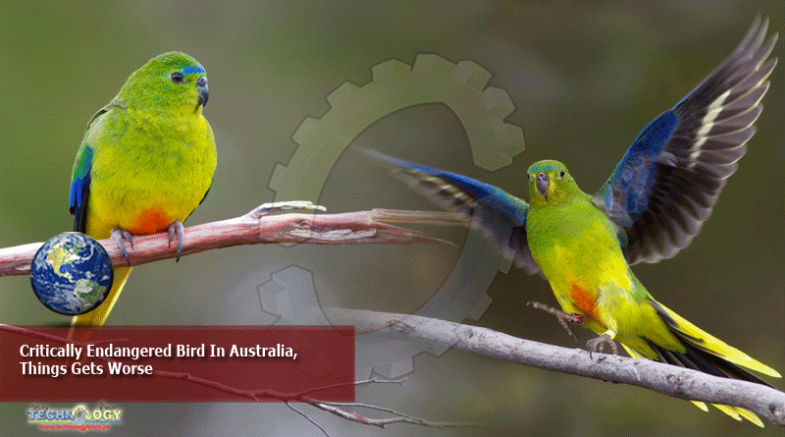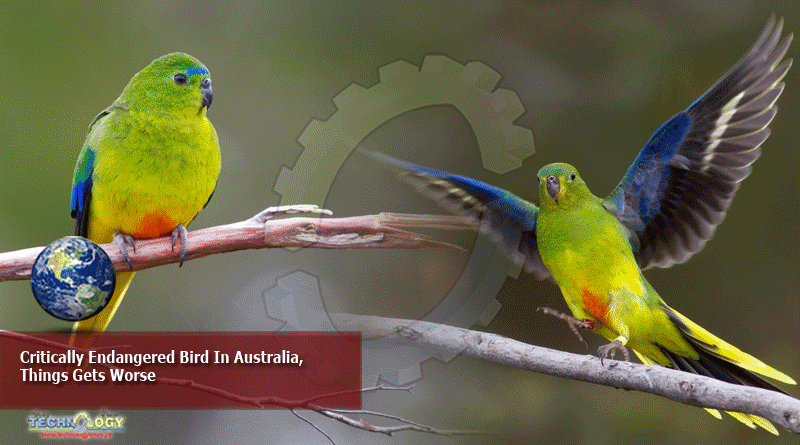When Sean Dooley Started Bird watching As A Kid In The 80s The Swift Parrot Was Already Rare, Bird In Australia

- “It’s a beautiful bird. I remember around that time it was said that there were maybe 8,000,” he says.
- He says there now could be as few as 1,000 left in the wild.
- It’s classed as “critically endangered” — one step from extinction.
- An independent review released last month found Australia’s environment is getting worse under the laws designed to protect it.
- Mr Dooley, from conservation group BirdLife Australia, considers the swift parrot one of the victims of the laws.
‘Death by a thousand cuts’
Mr Dooley says the swift parrot is a “tricky devil to preserve”.
They migrate from Tasmania to Victoria and feed on the eucalypt blossoms of blue gum trees. In drought years, when the trees don’t flower, the parrots will head as far as coastal or northern New South Wales and even to Queensland.
Bird In Australia, He says that range makes them vulnerable to the flaws in the Environment Protection and Biodiversity Conservation (EPBC) Act.
“The way [the Act] currently works is they don’t really take into consideration cumulative impacts,” he tells ABC RN’s Rear Vision.
But he says it all adds up.
“You see a bit of bush being cleared here, it doesn’t meet the criteria of having a significant impact, and a housing development there, or some logging in another site, and the lights go out for that bird across the landscape,” he says.
“Each incident isn’t deemed serious enough, and so the swift parrot has been declining throughout the period of the EPBC Act.”
Lesley Hughes, a professor of biology at Macquarie University, agrees that the Act tends to assess threats to a species in a vacuum.
“It’s the classic death by a thousand cuts. You could lose the species because each of those threats have been assessed independently rather than at the same time.”
Mr Dooley says the Act should also restrict logging of the swift parrot’s habitat, but instead other agreements between state and federal governments can take precedence.
“As long as the states say that they are considering the impact of an endangered species like the swift parrot, then there is literally nothing that the EPBC Act can do to intervene.”
‘A state of steady decline’
Bird In Australia When the laws were passed by the Howard Government in 1999, not all environmental groups were happy — but for others, it was better than nothing.
James Pittock, an environmental scientist at Australian National University, says after decades of “environmental wars” many wanted the Commonwealth to step in and regulate logging, but it was something neither side of politics would sign up to.
“My view and the view of other groups was that it would be very regrettable if logging operations weren’t regulated, but if we got an improvement by having the other 90 per cent or more of the country better protected, then that was a compromise worth accepting in the interim.”
Ten years later the first independent assessment of the Act was scathing.
Rachel Walmsley from the NGO the Environmental Defenders Office says the review — which is required every decade under the law — actually recommended the EPBC be repealed and rewritten.
“The 71 recommendations that the Hawke review came up with, unfortunately, never really saw the light of day. They have languished on a dusty departmental shelf.”
She says the law is fundamentally flawed.
“We have an Act that doesn’t prevent extinction, even though that is the primary national Act to conserve our unique biodiversity,” Ms Walmsley says.
Bird In Australia, “There have been about 6,500 projects referred under the Act in 20 years, but there has only ever been a handful of refusals, and the Act has been really ineffective in actually delivering environmental outcomes.”
Now, 10 more years on, another review is in.
Professor Graeme Samuel’s interim report has found the laws are ineffective, complex, costly to business and provide little benefit to the environment.
“We are seeing our environment in a state of steady decline over the 20 years since the Act has been in operation,” Professor Samuel says.
“It not only doesn’t achieve its environmental outcomes, but it impedes appropriate, and I mean appropriate, business development.”
Where we’re at now
Professor Hughes says Australia’s made some records we shouldn’t be proud of.
Bird In Australia, “Australia currently has the worst rate of mammal extinction anywhere in the world,” she says.
“A couple of years ago, WWF International put out a report that listed the worst deforestation hotspots in the world. I think there were 11. Australia was the only developed country on that list.”
Australia’s also the first country to see a mammal become extinct due to climate change.
University of Queensland environmental scientist Martine Maron says the Bramble Cay melomys was lost to storm surges and sea level rise on the small Great Barrier Reef island where it lived.
The Christmas Island pipistrelle, a small insect-eating bat, and the Christmas Island forest skink have also disappeared.
“We knew they were in trouble but we didn’t act in time, and so it’s too late for them,” she says.
“But there are so many more species that are really on the brink that we can still act for and we need coordinated national action to achieve.”
Professor Maron says island species are especially vulnerable.
“The species that are in trouble on the mainland have been able to hang on longer, but for how much longer is the question,” she says
Bird In Australia, “Unfortunately every tree we put back, every bit of habitat we restore … is undone many times over by land clearing, by ongoing loss of habitat, and those of the sorts of situations that the Act has simply not been able to get a handle on.”
Other countries, it seems, have done better.
The Wilderness Society’s Suzanne Milthorpe says the United States’ Endangered Species Act has been remarkably successful, compared to Australia’s efforts.
“Ninety per cent of species are meeting their recovery milestones … and it is estimated that 227 extinctions have been prevented, which is incredible, compared with Australia where you’ve only really got one or two animals that have ever come off the EPBC because they’ve been recovered by conservation action.”
She says the US law has strong safeguards, and the ability for communities to force the government to the table “and actually say to them we’re going to take you to court to make sure you do your job”.
“They’ve [also] got this really strong threshold that basically says once a species is endangered, you can’t harm it and you can’t harm its habitat or the places that it needs to survive, to breed, to feed, to thrive,” she says.
“And importantly they define its habitat as not only the place that it needs to live now, but also the habitat that it needs to recover.”
Doing the work
Professor Hughes says one area where the laws fail is actually ensuring the work to save the species gets done.
Bird In Australia, She says when a species is listed as threatened a recovery plan is supposed to be written.
“What has happened is that we have many, many species and communities listed that don’t have plans written at all.”
But she says even when there is a recovery plan, there’s then no obligation for it to be funded.
“The Act looks after the first part of the process, but it doesn’t actually oblige the government to mandate the actions and to resource them effectively to mean that the species actually recovers,” she says,
“Over the years, especially over the last decade, the amount of real dollars spent on saving threatened species in particular and environmental protection more generally has continued to decline.”
Mr Dooley says there have been instances where recovery plans have saved threatened species.
He says the Kangaroo Island glossy black cockatoo and the Norfolk Island green parrot both bounced back — but conservationists have had to fight for funding when the money dried up.
“We know that conservation actions work, but they have to be resourced, they have to be based on good data, based on good monitoring, and we just don’t even get that for most of our threatened species,” he says.
“Currently of the 71 threatened birds on the EPBC Act, only six of them have up-to-date recovery plans that are resourced.”
The future
The Government is now considering the Samuel review interim report, but has already ruled out the recommendation for a “strong independent cop” to oversee the environment laws.
Environment Minister Sussan Ley said the Government didn’t want “additional layers of bureaucracy”.
“The Government will take steps to strengthen compliance functions and ensure that all bilateral agreements with states and territories are subject to rigorous assurance monitoring,” she said.
The Government does support a move to devolve federal approvals to the states to create a “one-stop shop”, something that concerns Professor Hughes.
“What we are all concerned with is that the Government will cherry-pick those recommendations that they can use to make things easier for developments to take place, which will actually give us worse environmental conditions than before,” she says.
“Things could actually get worse rather than get better.”
Bird In Australia Professor Pittock says there should be stronger national standards and that the states should change their laws to match.
“We need better information systems so that it is clearer to everybody where the places are of environmental importance that should be left alone versus those where development activities should occur,” he says.
“There is a need for more matters of national environmental significance to control things like the clearing of native vegetation. Australia is one of the top five countries undertaking deforestation in the world, it’s a disgrace.”
This news was originally published at abc.net.au
